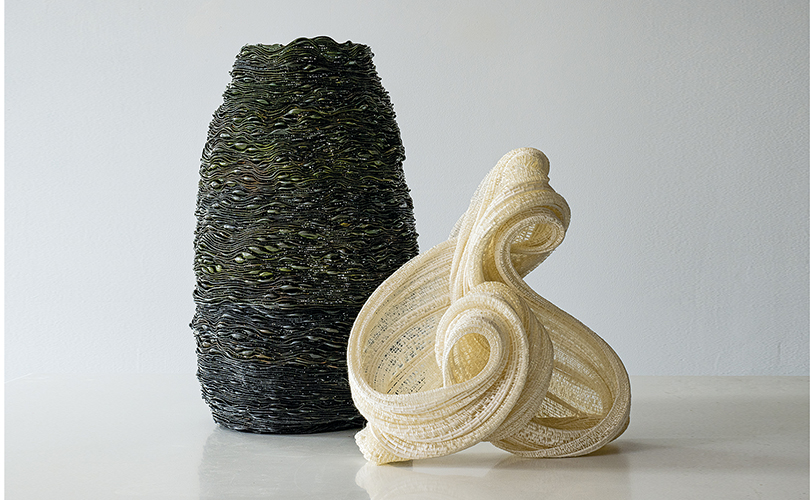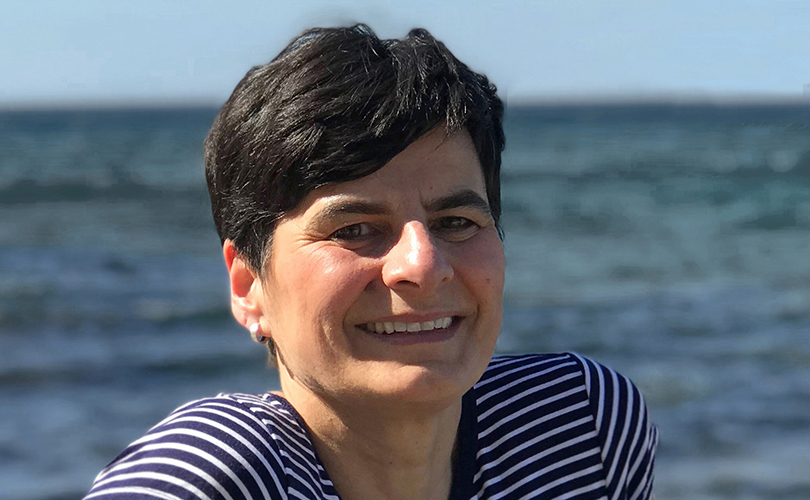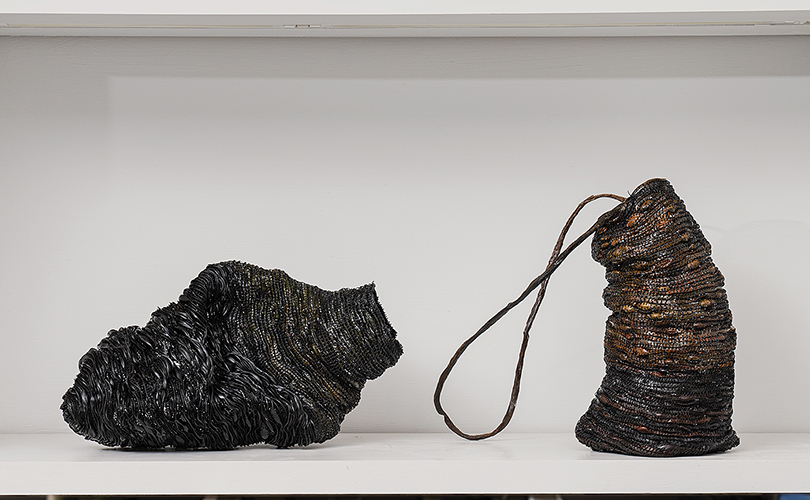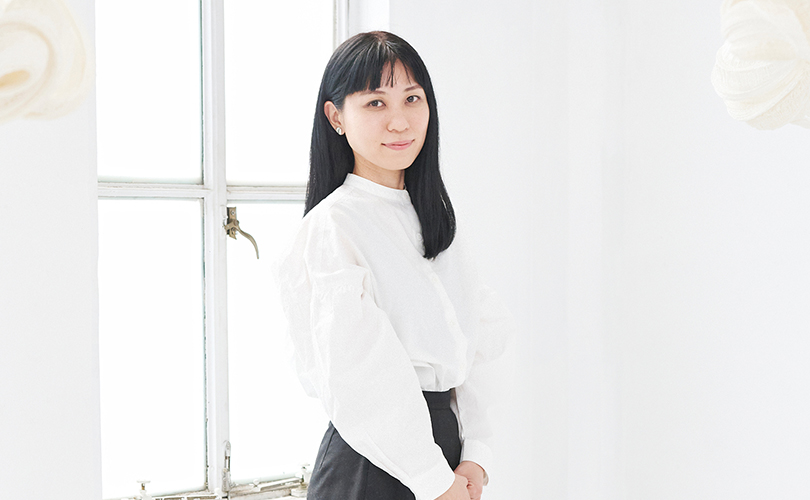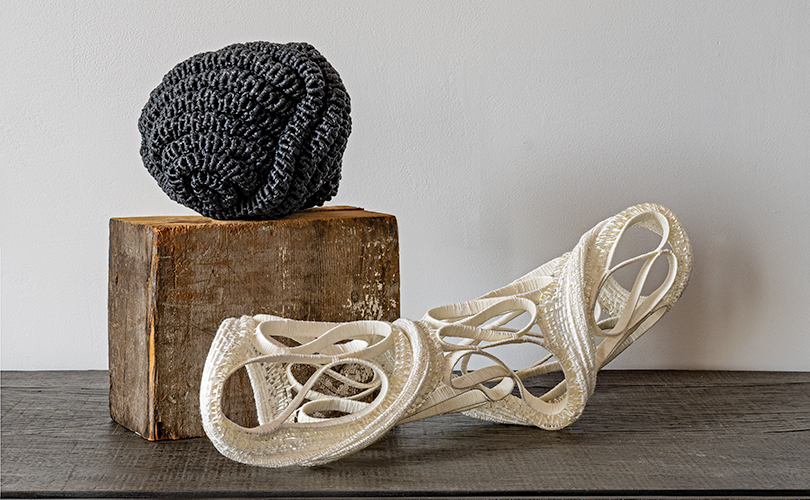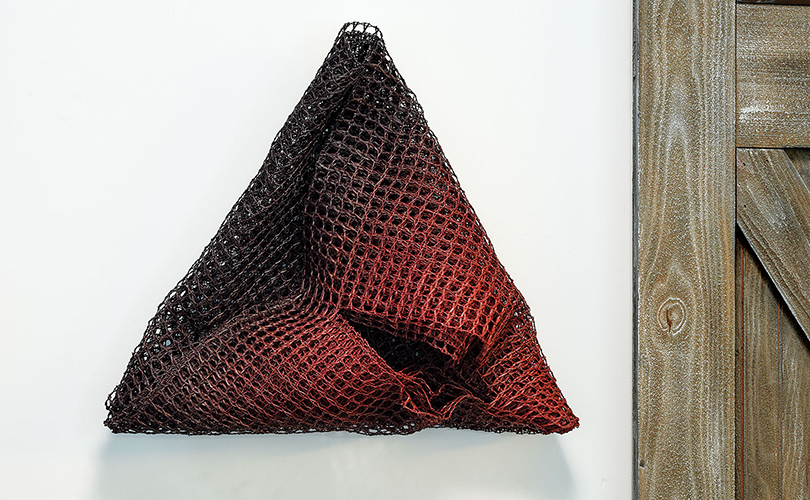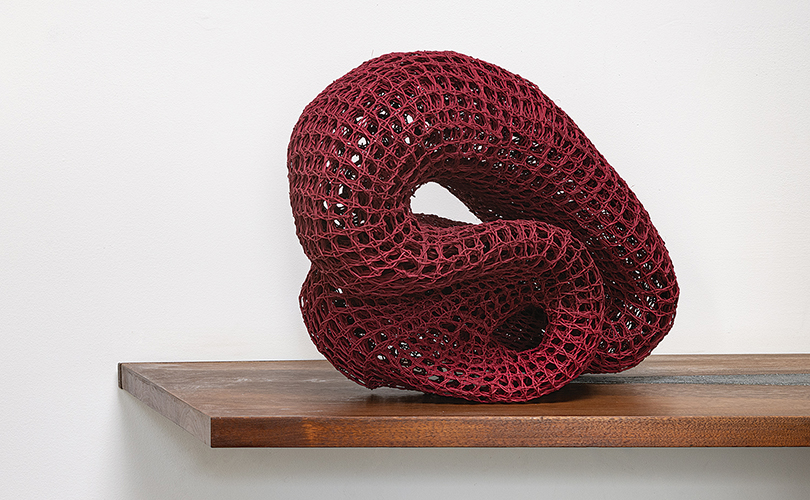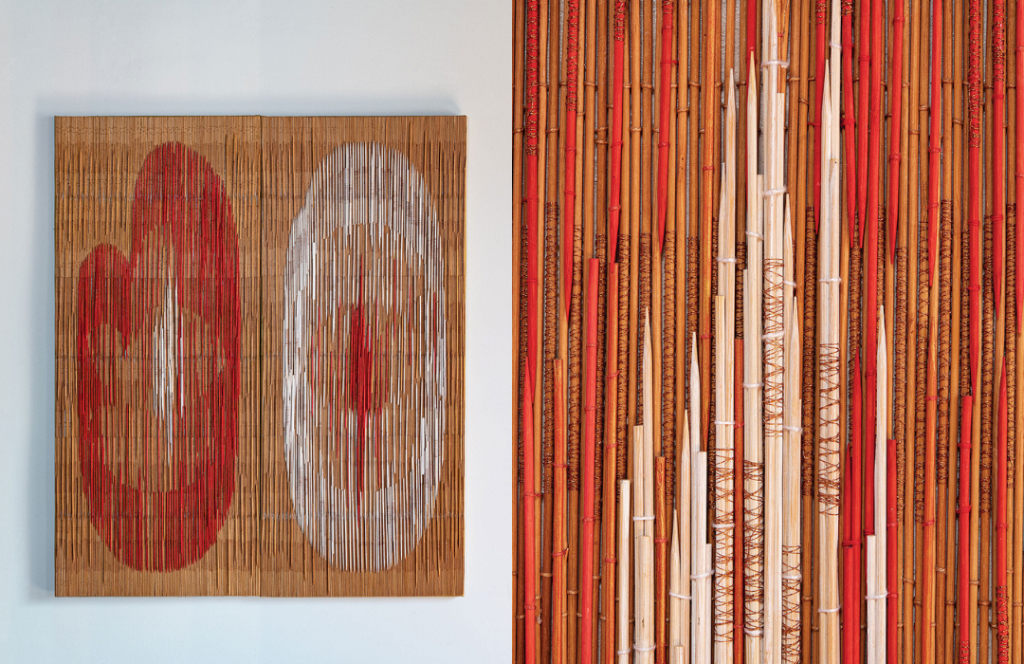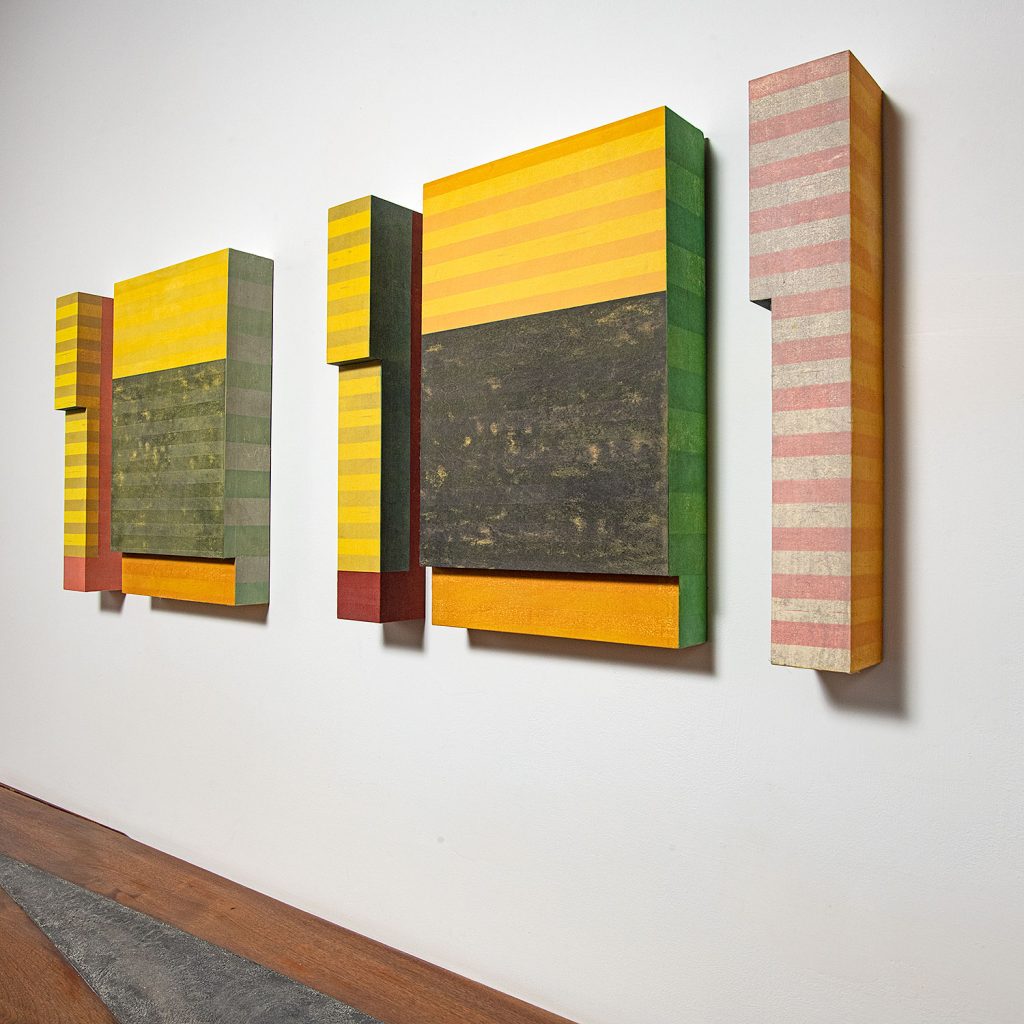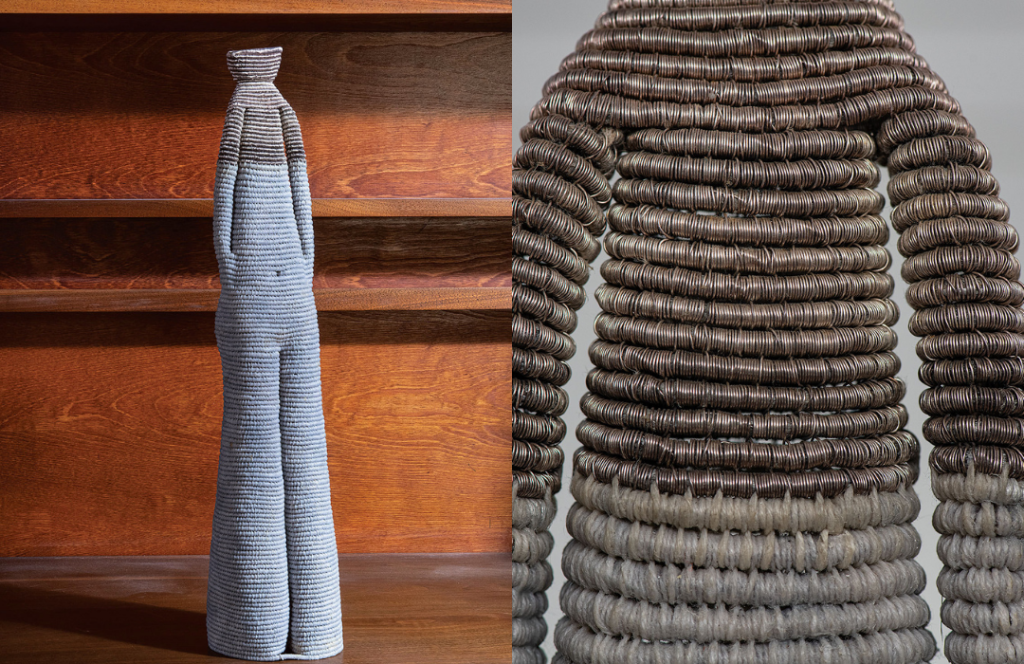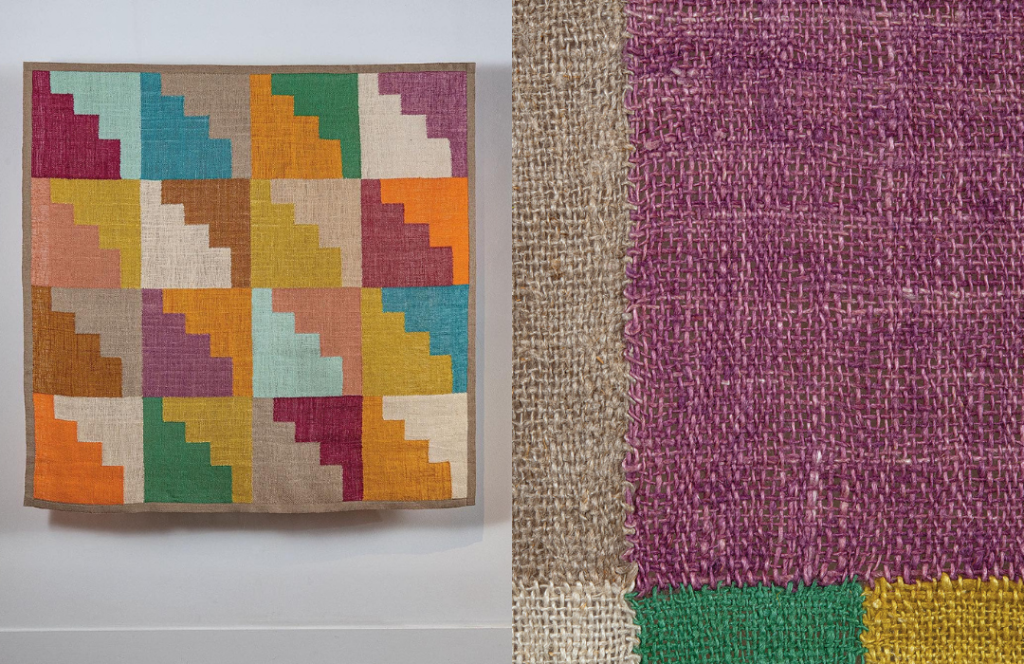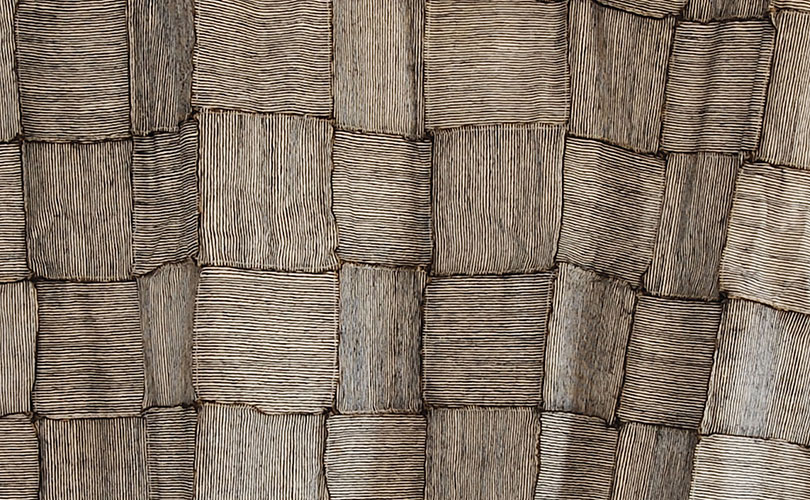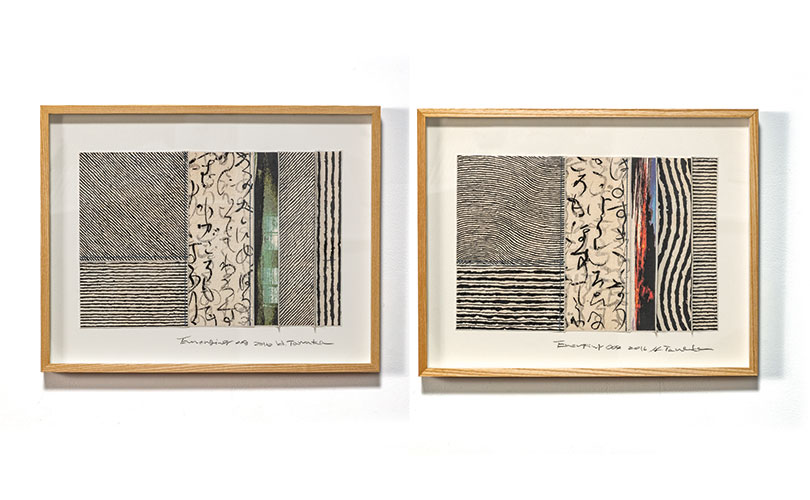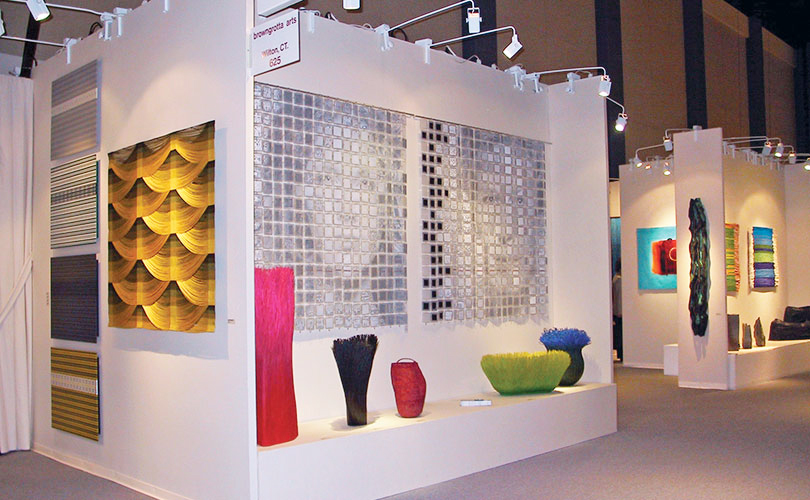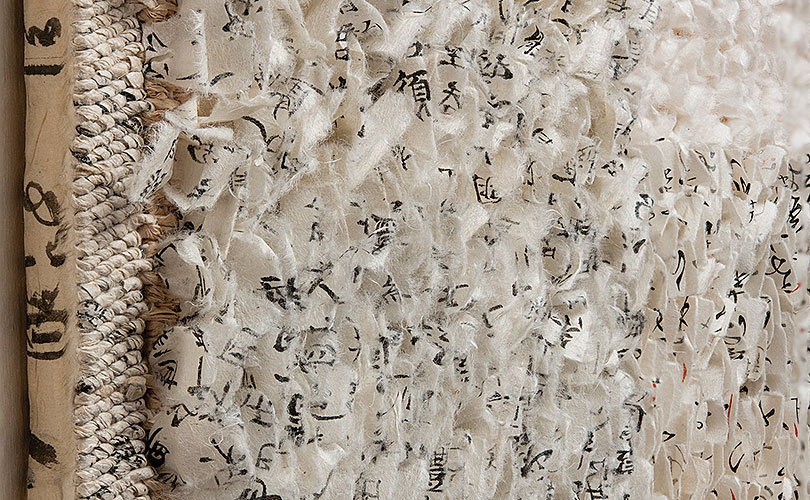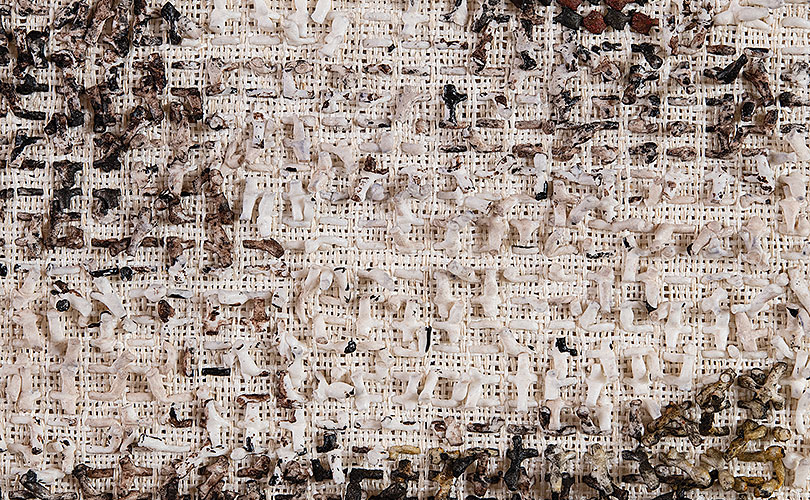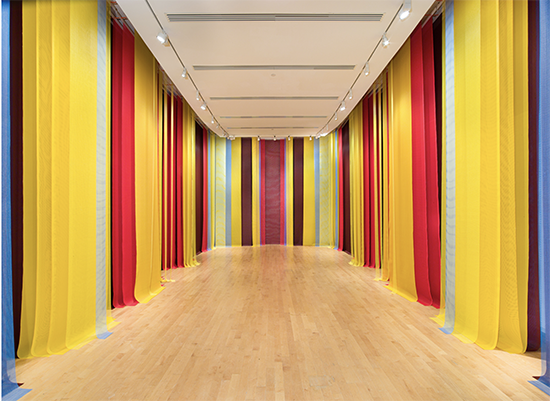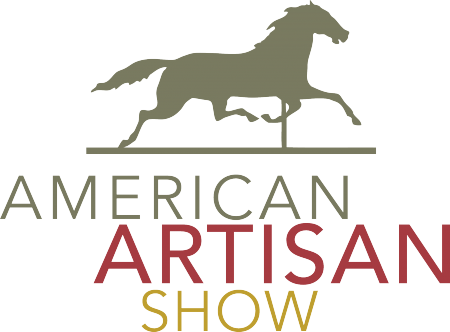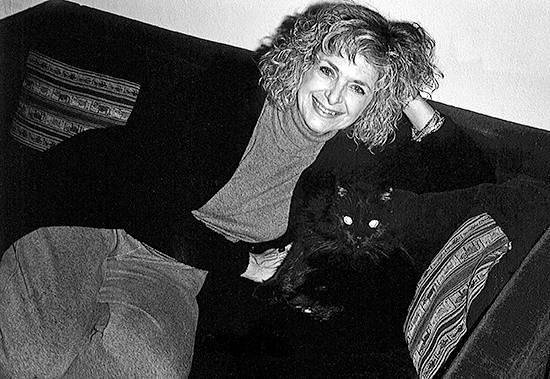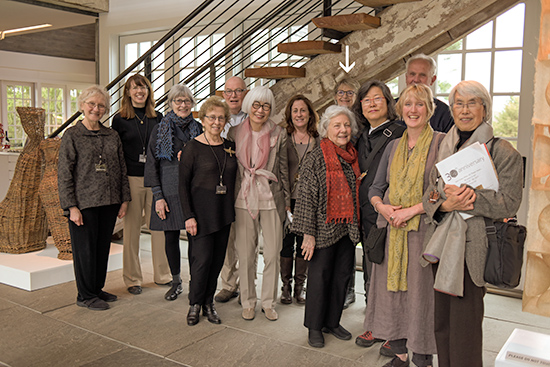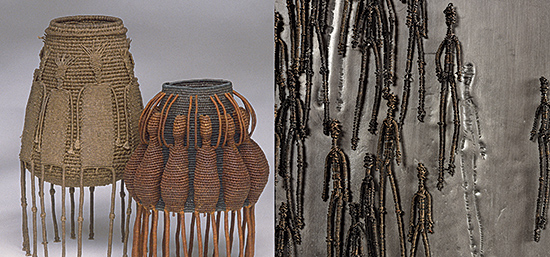Although launching our spring exhibition, Crowdsourcing the Collective: a survey of textiles and mixed media art, has kept us busy, we still had no shortage of new art to introduce you to in April. We presented art from many talented artists, including work from: Masako Yoshida, Ethel Stein, Polly Barton, and John McQueen. Just in case you missed out, we’re covering all the details about these artists and their art! Read on for more.
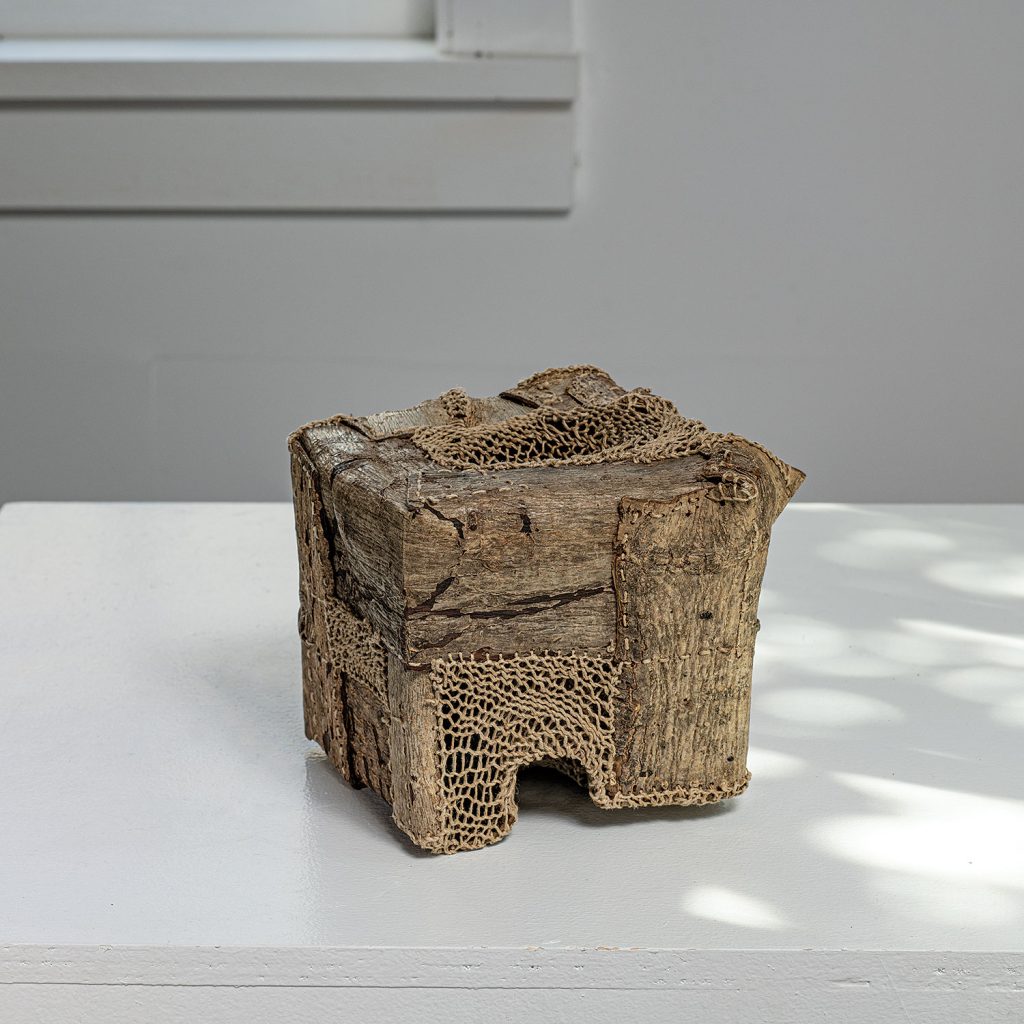
This artwork comes from Japanese basketmaker, Masako Yoshida. Yoshida created this piece by interlacing sheets of walnut bark with string made of nettle. When asked about her work, Yoshida said:
“My work provides a means of release, allowing the truth to emerge and open the mind. In the process, I ask myself, ‘what is my connection to society?'”
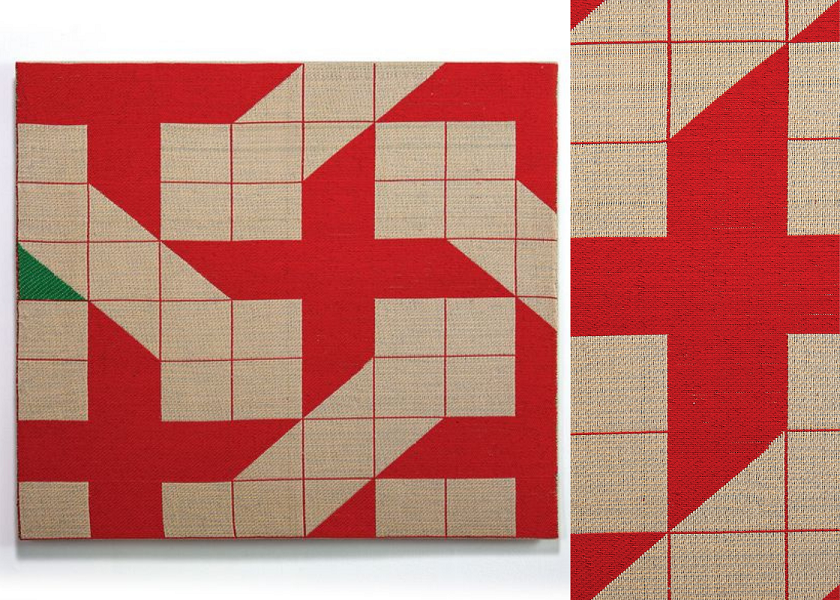
Touch of Green comes from the late Ethel Stein, who was an exceptional American textile artist. Within her career, Stein created countless intricate textile pieces, and browngrotta arts has had the honor of representing her work for nearly 15 years.
Within Stein’s work, she has been known for using reproposed items that have been discarded as a medium and creating something miraculous with them. Often, her artwork is distinguished by its rhythmic simplicity, although it’s created with extraordinary technical complexity.
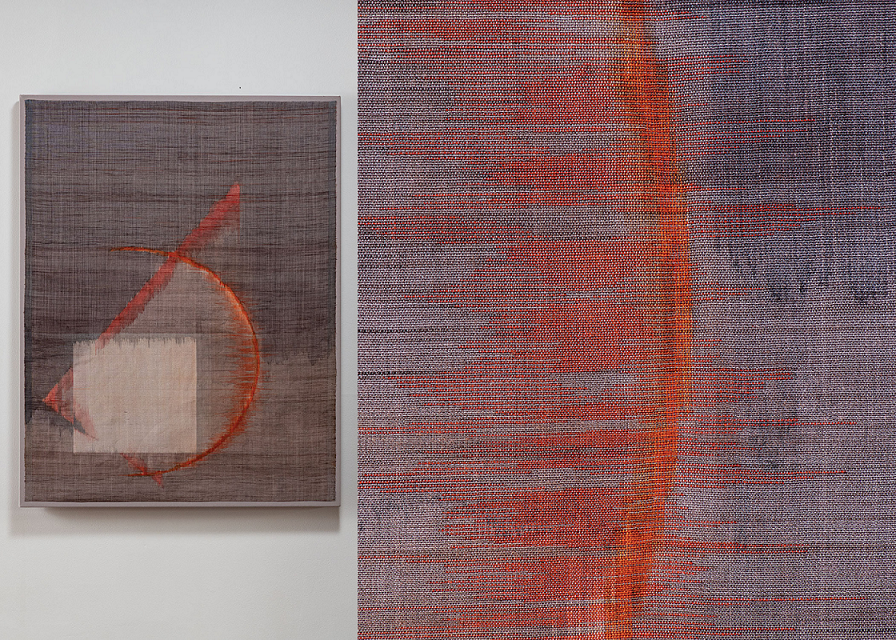
Thistledown was created by nationally recognized American fiber artist, Polly Barton. Trained in Japan, Barton is known for working with traditional methods of binding and dyeing bundles of fiber to weave contemporary imagery. More specifically, Barton is known for her talent in adapting the ancient weaving technique of ikat into contemporary woven imagery.
Barton has been charting the way for fiber art over the past 40 years. In fact, early in here career in 1981, Barton moved to Kameoka, Japan to study with master weaver, Tomohiko Inoue.
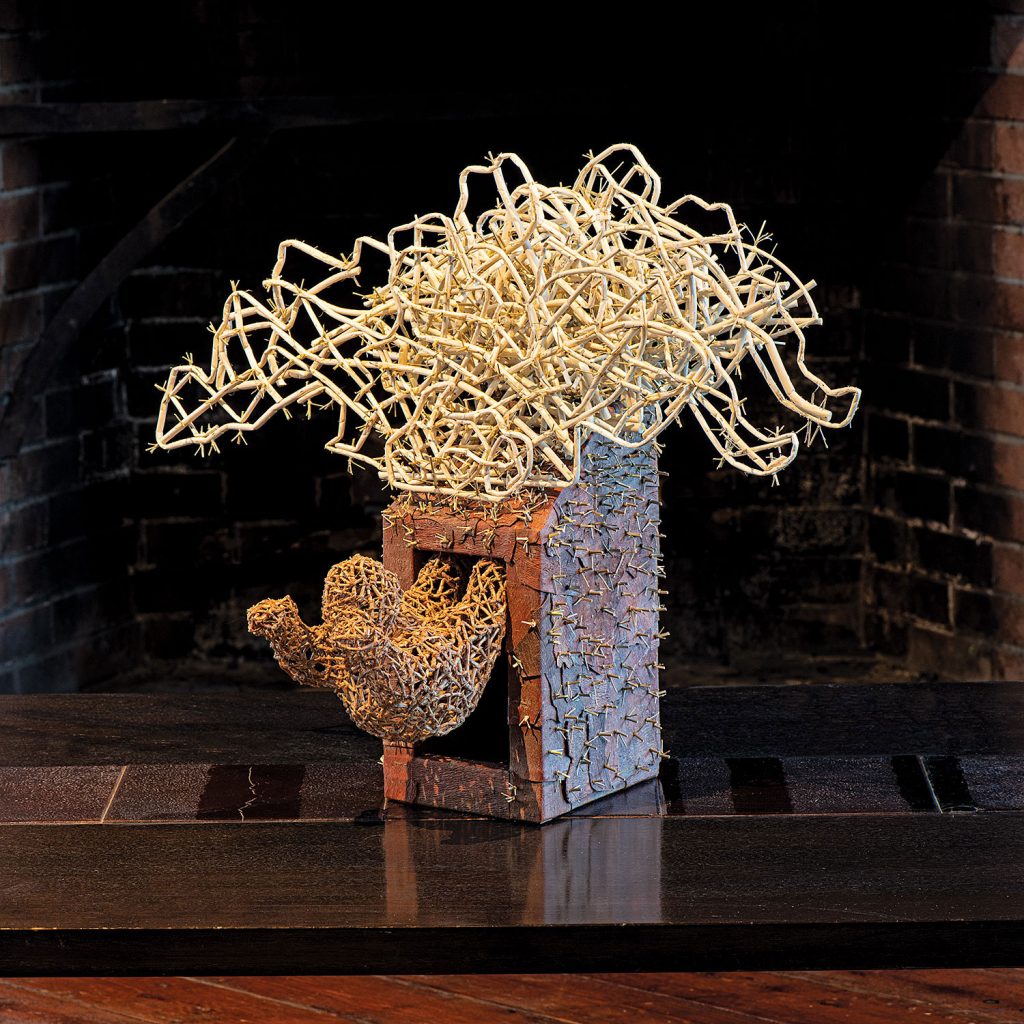
This artwork was created by American artist, John McQueen. Within his work, viewers can often find themes of prominent world associations. Often, his three-dimensional works are created with natural materials like twigs, bark, cardboard – he prides himself on being able to create with found objects.
McQueen has discussed how plastic and metal are ubiquitous in landfills and our own trash and he hopes to draw attention to this waste problem with his art, as we are burying ourselves in waste without seeing it.
If you like the art you see – keep your eye out for even more in May! You’ll even have the opportunity to see art in person at our spring exhibition launching this weekend. Visit: https://bit.ly/38QiXCe to join us.

